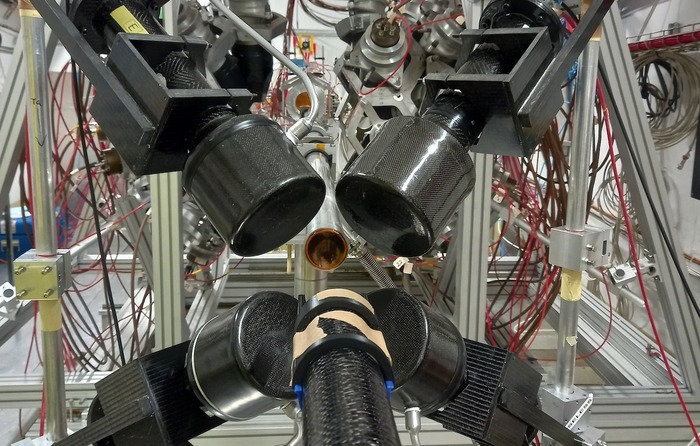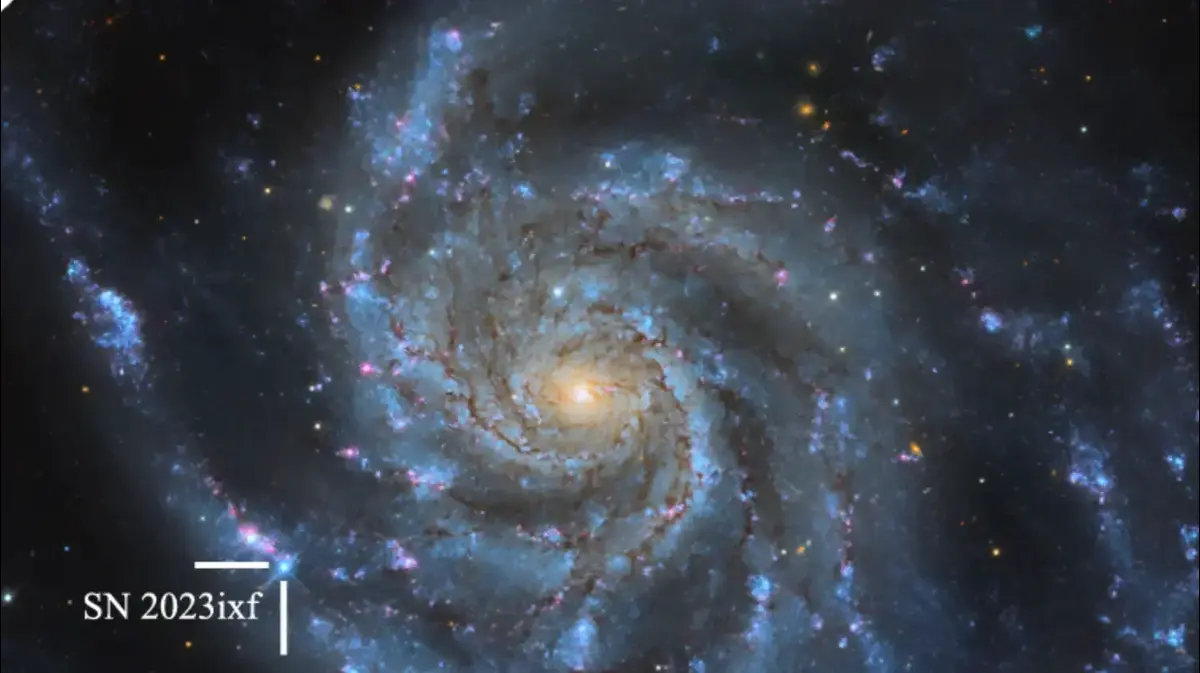Artist's impression of the Higgs boson (orange top and bottom) resulting from the collision of two protons. © imago/Science Photo Library
Researchers at the CERN nuclear research centre are observing a new type of decay in the Higgs boson. Is there a "new physics" behind it?
Geneva – When the Higgs boson was discovered in 2012 with the help of the particle accelerator at the CERN nuclear research center in Geneva, the joy in science was immense: a theory developed by physicist Peter Higgs and other researchers as early as 1964 had been confirmed, and the Standard Model of physics had also been confirmed. Higgs and his physicist colleague François Englert received the Nobel Prize in Physics in 2013 for the discovery of the Higgs mechanism.
But not all the mysteries surrounding the Higgs boson have been solved, and research continues. At the LHC particle accelerator at CERN, a research team has now succeeded in observing for the first time a theoretically predicted but previously unobserved decay form of the Higgs boson. In the process, the Higgs boson decays into a Z boson and a photon – but not directly. Prior to this, various "virtual" particles are created that appear and disappear seemingly out of nowhere, which is why they cannot be detected directly.
Observed for the first time: Higgs boson decays into Z boson and photon
The researchers involved suspect that these virtual particles could also contain new, previously unknown particles that interact with the Higgs boson. "The existence of new particles could have significant implications for rare Higgs decay types," explains Florencia Canelli, physics coordinator of the CMS experiment at CERN.
Is the prediction of the Standard Model of physics correct?
The Standard Physical Model predicts that a Higgs boson with a mass of about 125 teraelectronvolts will decay into a Z boson and a photon about 0.15 percent of the time. Some theories that go beyond the Standard Model predict a different rate of decay. Therefore, the measurement of this rate provides researchers with important insights into physics beyond the Standard Model and into the nature of the Higgs boson.
In Geneva, the researchers from the CMS and ATLAS experiments have therefore joined forces and combined their data to track down the Higgs boson. The decay of the Higgs boson into a Z boson and a photon was discovered. And the first data already show that the decay rate could be significantly higher than theoretically predicted, namely 0.34 percent. There could be a "new physics" at work here that has not yet been discovered.
Each particle has a special relationship with the Higgs boson, which makes the search for the rare Higgs decay a high priority.
ATLAS Physics Coordinator Pamela Ferrari
"Each particle has a special relationship to the Higgs boson"
"Each particle has a special relationship to the Higgs boson, which makes the search for the rare Higgs decay a high priority," explains ATLAS physics coordinator Pamela Ferrari in a statement, adding: "By carefully combining the individual results of ATLAS and CMS, we have taken a step forward in deciphering another mystery of the Higgs boson."
0
Also Read
Surprising signal from the alien planet – "Clear indication that we may have something here"
READ
Nasa rover makes unexpected find on Mars
READ
"We're not done with the game of hide-and-seek" – Nasa team worried about Mars helicopter
READ
Uranus is "not just a simple blue ball of gas" – Surprising find at the North Pole
READ
Surprising turnaround in space exploration: Supposed "star trail" is something completely different
READ
Fancy a voyage of discovery?
My Area
Higgs boson – the "God particle"?
For a time, the Higgs boson was nicknamed the "God particle". But this term is not used in serious science and Peter Higgs, the physicist after whom the Higgs particle was named, also rejects the term.
However, the discovery is not yet completely certain. The significance is 3.4 sigma (probability of statistical fluctuation is less than 0.04 percent). For an official discovery, the significance must be 5 sigma – a one in 3.5 million chance that the discovery was a mistake. (tab)









